Comparative study between sodium carboxymethyl-cellulose silver, moist exposed burn ointment, and saline-soaked dressing for treatment of facial burns
- PMID: 21991168
- PMCID: PMC3188148
Comparative study between sodium carboxymethyl-cellulose silver, moist exposed burn ointment, and saline-soaked dressing for treatment of facial burns
Abstract
Facial burns vary from relatively minor insults to severe debilitating injuries. Sustaining a burn injury is often a psychological trauma for the victim and is especially menacing when the face and neck are involved. This study was carried out on 60 patients with superficial dermal burns to the face admitted to the Burn Unit of Tanta University Hospital, Egypt, from September 2007 to July 2008. The patients were allocated randomly to one of three groups, each of which was treated with one of the following: sodium carboxymethyl-cellulose silver (Aquacel Ag®), MEBO® (moist exposed burn ointment), or saline-soaked dressing. We found that patients managed with MEBO® had less pain and itching and easier movement than those managed with Aquacel Ag®, while the Aquacel Ag® group required a shorter duration of time for healing, without any bad odour, than the MEBO® group. Quality of healing and patient satisfaction were nearly equal as regards MEBO® and Aquacel Ag®. Saline-soaked dressings were least satisfactory - they caused the most pain and itching, limited the patients' movements the most, needed the longest time for healing, and gave patients the least satisfaction. It was concluded that MEBO® was an excellent choice for management of facial burns owing to its soothing effect, ease of patient movement, easy handling, and good healing properties. Aquacel Ag® was found to be comparable to MEBO® and is specially recommended when frequent dressings cause difficulties for the patients or when they cannot accept a bad odour; saline-soaked dressings are not recommended for the management of facial burns because of the pain they cause, itching, limitation of patient movement, and delayed healing.
Les brûlures du visage varient de cas relativement mineurs aux lésions graves et débilitantes. Subir une brûlure constitue souvent un traumatisme psychologique pour la victime et il est particulièrement inquiétant lorsque le visage et le cou sont en cause. Cette étude a été réalisée sur 60 patients atteints de brûlure cutanée dermique superficielle du visage admis à l'Unité des Brûlures de l'Hôpital Universitaire de Tanta, Egypte, de septembre 2007 à juillet 2008. Les patients ont été répartis au hasard en trois groupes et chaque groupe a été traité avec l'emploi ou de carboxyméthylcellulose contenant de l'argent (Aquacel Ag®) ou de MEBO® (moist exposed burn ointment/onguent pour les brûlures exposées humides) ou des pansements trempés dans une solution saline physiologique). L'Auteur a constaté que les patients traités avec le MEBO® avaient moins de douleur et de prurit et une facilitation majeure dans les mouvements par rapport aux patients traités avec Aquacel Ag®. Par rapport aux patients traités avec le MEBO®, la période de la guérison était plus brève et sans odeur désagréable. La qualité de la guérison et la satisfaction des patients ont été à peu près égales pour MEBO® et Aquacel Ag®. Les pansements trempés dans une solution saline physiologique étaient les moins indiqués, à cause de la douleur qu'ils provoquaient, le prurit, la limitation des mouvements du patient et les temps de la guérison trop longs - cette méthode a été évaluée par les patients celle qui donnait la moindre satisfaction. L'Auteur conclut que le MEBO® constitue un excellent choix pour la gestion des brûlures du visage en raison de son effet apaisant, la facilité des mouvements du patient, la simplicité d'emploi et les bonnes qualités de guérison. Aquacel Ag® est comparable au MEBO® et son emploi est particulièrement recommandé dans les cas où le changement fréquent des pansements crée des difficultés pour les patients et quand ils ne peuvent pas tolérer son odeur. Les pansements trempés dans une solution saline physiologique ne sont pas recommandés pour la gestion des brûlures du visage à cause de la douleur, le prurit, la limitation des mouvements du patient et la guérison tardive.
Keywords: BURN OINTMENT; CARBOXYMETHYL-CELLULOSE; COMPARATIVE; DRESSING; FACIAL BURNS; MOIST EXPOSED; SALINE-SOAKED; SILVER; SODIUM; STUDY; TREATMENT.
Figures


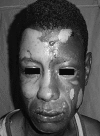
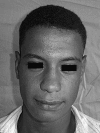
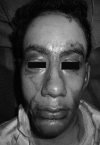
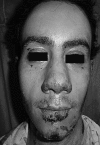
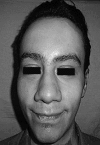
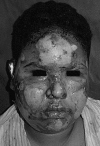
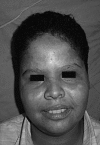












References
-
- Mostafa M.F., Burhan A., Abdulla A.F. et al. A retrospective study of 5505 burned patients admitted to Alexandria Bum Unit. Ann. Burns and Fire Disasters. 1990;3:269–269.
-
- El Sonbaty M., El Oteify M. Epidemiology of burns in Assiut Province, Egypt, during the last two years. Ann. Burns and Fire Disasters. 1991;4:22–22.
-
- El Borgy A.F. M. Sc. Thesis. General Surgery, Tanta University; 2003. Epidemiology and outcome of burn in pediatric patients in Tanta University Burn Unit.
-
- Palmieri T.L., Greenhalgh D.G. Topical treatment of pediatric patients with burns: A practical guide. Am. J. Clin. Dermatol. 2002;3:529–529. - PubMed
-
- Al-Numairy A. Clinical use of MEBO in wound management in U.A.E. Inter. J. Cosm. Surg. Aesth. Dermatol. 2000;2:27–33.
LinkOut - more resources
Full Text Sources
Research Materials
